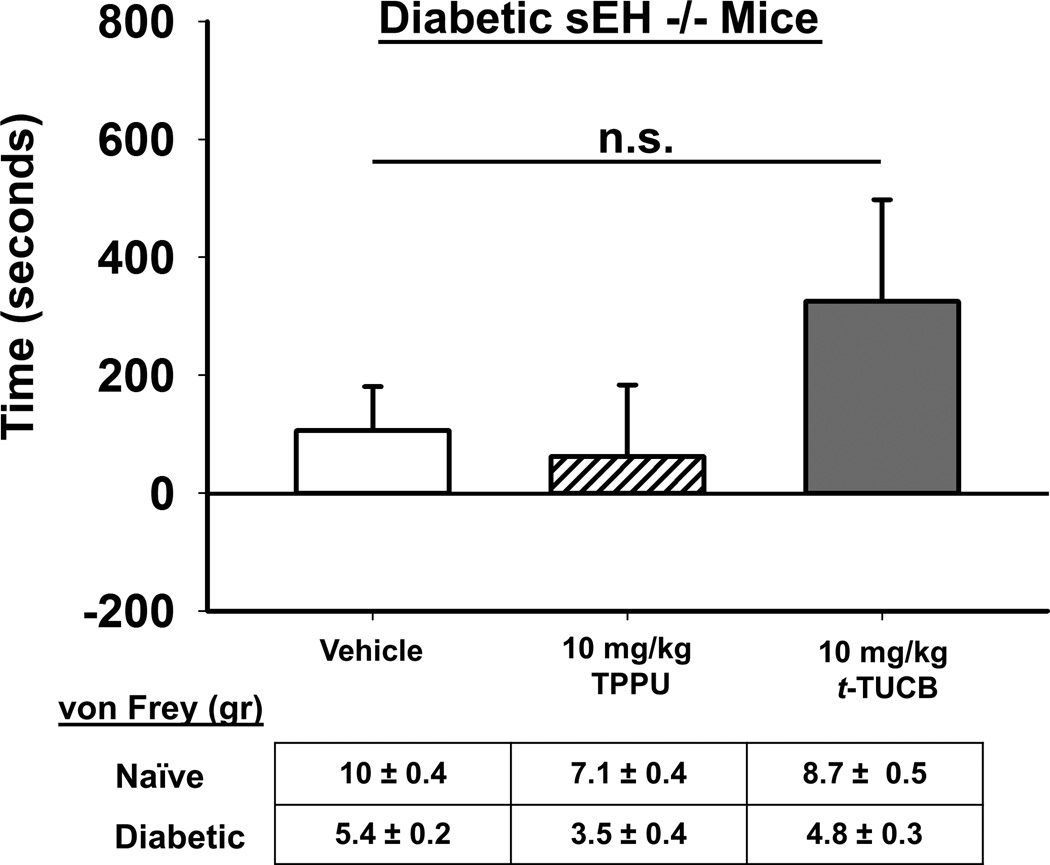Figure 3.
Inhibitors of sEH do not significantly induce a CPP response in diabetic sEH null mice. In sEH null mice induced with diabetic neuropathy neither t-TUCB nor TPPU, a structurally distinct but similarly potent sEHI, have a significant effect in the CPP assay (One Way ANOVA, p=0.333). In the CPP assay this is measured by increased time (seconds, y axis) spent in the drug paired chamber. This is in contrast to the robust effect of t-TUCB in wild type diabetic mice (Fig 2) indicating that targeting the sEH enzyme mediates the sEHI efficacy. The diabetic mice were assessed for phenotypic allodynia indicating diabetic neuropathy in the von Frey assay prior to the CPP assay. The results depicted below the graph are the grams of force to elicit a hind paw withdrawal (von Frey (gr)) of pre-streptozocin baseline scores (Naïve) and post streptozocin painful baseline scores (Diabetic) prior to the start of treatment in the CPP assay.

